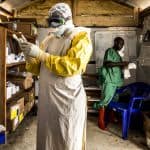Protecting Clients in a Crisis: Five Lessons BRAC Learned While Re-Engineering its Microlending Strategy During COVID-19
One of the harshest economic effects of the COVID-19 pandemic has been its impact on small businesses and the people whose lives depend on them. Business closures, including those caused by lockdowns, placed an enormous burden on microfinance clients in Bangladesh, as they did in other countries. This particularly impacted merchants in small and micro businesses, who suddenly found themselves facing deep income shocks that rendered them unable to support their livelihoods and financial obligations.
These challenges grew when a countrywide lockdown was initiated in March 2020. To comply with that, microfinance institutions halted their operations. Not only were microfinance clients not able to make transactions or repayments, but lending institutions could not make any new loans. With the lending cycle completely disrupted, clients did not have access to new financing that could have eased their circumstances. Providers were also severely impacted: For BRAC Microfinance alone, this meant the disruption of a nearly billion-dollar (U.S.) monthly cycle. We have 8 million microfinance clients in Bangladesh, and in a normal month we lend on average $490 million and receive repayments of almost $480 million.
This situation required BRAC Microfinance to make dramatic adjustments to our operations, including loan refinancing – i.e., offering additional loans to clients who already have outstanding loans. That, in turn, required us to re-engineer not only our product propositions, but how we assessed the best interests of our clients. Our experience executing this strategy provides valuable insights for managers in microfinance institutions worldwide – and others looking to stimulate economies that rely on micro, small and medium-sized enterprises – during crises. I’ll share five of those insights below.
1: Listen to Clients and Adapt to Changing Circumstances
When the first lockdown ended, our clients were under even greater financial pressure than they were before it started. Many had depleted all their savings, had been forced to make other living arrangements, and had fallen further into debt. The question for us was: How could we best help?
To devise a workable strategy, we listened to our 30,000+ staff on the ground from all over the country, through layered, virtual meetings. We learned that many of our clients could get back on their feet financially if we refinanced their loans – an option that we had never tried before at scale. This would mean creating risk for them and us, because we’d be making additional loans to clients on top of outstanding loans.
That created an urgent management challenge: How could we determine who would best benefit from more debt when they could not repay their existing debt? And how could we retrain our staff, who had been trained not to put our clients into more precarious financial positions?
A key realization emerged as our response to this challenge unfolded: We realized it was essential to adapt to changing circumstances to ensure that our clients’ needs remained our top priority. We quickly developed a communication channel that connected senior leadership directly to the staff on the ground, who were the closest to the communities we serve. Through this channel, we learned that many clients needed more than rescheduling their loans to regain their financial footing – they needed an infusion of funds that would enable them to become productive again. It was not the time to talk about what was due; it was time to figure out what those vulnerable families needed.
This realization recalled BRAC’s experience during the 2014-2015 Ebola outbreak in Liberia and Sierra Leone, when we learned that, even amid economic crises, new loans should be provided to those who need them the most. There, much as more recently in Bangladesh, many clients had not worked in months. Many had lost their initial capital and even their businesses and had gone into debt, yet they needed new capital to start regenerating income. And BRAC’s experience in both of those West African countries showed that these new loans would be repaid.
2: Be Decisive in the Face of a Crisis
BRAC has a long history of designing research-proven, human-centred innovations that improve the lives of people living in situations of poverty and inequality. Normally, we design a new product and pilot it in multiple settings – then we study it and adapt it. But in this case, there was no time.
To have immediate impact, we would have to design our new loan product as thoughtfully as we could and take a chance. If it didn’t work, we would just have to take the loss. Though this possibility would normally be very concerning, we knew that if we did not provide financing support to this group in their time of crisis, many of them would not be able to recover – or recovery could take them years longer. They would remain in debt, and our number of non-performing loans would grow. So, from both a social impact and a business perspective, the way forward was clear.
Fortunately, we had gained insights from the Ebola experience in West Africa that we could draw upon. But we also had very different conditions in Bangladesh, and a far bigger operation to re-engineer, so the success of these efforts wasn’t ensured. Nevertheless, by acting decisively, we were able to quickly get our clients the support they needed.
3: Consider Individual Clients’ Needs When Re-engineering Your Operating Practices
In Bangladesh, the crisis required us to re-engineer our lending practices, expectations and incentives to encourage appropriate refinancing (something we had not encouraged in the past through any specific product). We had previously tried introducing, in specific circumstances, an option to take an additional loan on top of an existing loan, but it proved difficult because of the organization’s longstanding commitment to completing one loan before providing another. Making refinancing work, therefore, required clarifying the conditions in which additional loans are appropriate, and training field officers so that they understood the value of this new approach.
We started this process by mapping the economic conditions of different industry sectors. In some sectors the pandemic-related drop in revenue, while quite significant, was tolerable. In others, it was far steeper. We prioritized harder-hit sectors and addressed individual needs within them.
We then categorised clients according to individual need. Some clients had a relatively clear idea of what their possible steps to recovery could be, making it easier for BRAC to support them. Others were more complicated. We observed four groups of clients: People who had lost jobs and were passing through a limbo period (with the expectation that they would get their jobs back) were fit for rescheduling their existing loan payments. People whose main income source was hampered, requiring them to get involved in unstructured income-generating activities, were also fit for rescheduling. People who were resilient and going through income shock but had a recovery plan were more appropriate for refinancing. And people who, due to income shock, were pushed below the poverty line were handled separately by BRAC’s dedicated poverty graduation programme.
For clients whose loans were 80-90% unpaid, and who had exhausted the entire loan amount, rescheduling their loan repayments would be the best solution, because what they needed most was extra time to pay off the loan. Clients who fit into this category typically included people who had completely lost their regular income and had little chance of regaining it. In contrast, for clients whose loans were 20-60% unpaid, refinancing was more appropriate. Clients who fit into this category typically included owners of agriculture-based businesses, pharmacies, health-related service providers and grocery shops.
Another consideration was the minimum cash-at-hand to justify refinancing. The amount that clients would receive after refinancing would need to be enough to actually restart their businesses, not just enough to repay the loan. To address this, we set the minimum cash-at-hand limit at 30% of the refinanced amount.
4: Provide Field Staff with the Tools They Need to Implement the New Strategy Successfully
Refinancing is an investment in the resilience of clients, but it is crucial that it does not subject clients to loans they will never be able to repay. The field staff need to be confident that they will achieve the right balance. This was especially true in our case, given the traditional reluctance of our staff to do refinancing.
We therefore created a loan calculator for refinancing that could be added to a field officer’s mobile tablet to make it accessible in the field. The calculator facilitated refinancing and supported field officers’ interactions with clients. It factored in clients’ financial information – such as income, household debt and outstanding loans – and helped determine the terms of the refinancing. If the typical loan that a client would get from BRAC Microfinance was, for instance, for 12 months, the refinancing could be for six, nine or 12 months. The calculator helped determine what repayment timeline was best, and also enabled speedy decisions, as circumstances required.
5: Take Calculated Risks
BRAC Microfinance knew that our refinancing strategy represented a substantial risk. But it appears that this risk is paying off.
In the fourth quarter of 2020, with our new approach to refinancing implemented, we disbursed a record amount – almost $1.7 billion – through a mix of regular loans and refinanced loans, which made up 17% of the total. Most of the refinancing involved small and micro businesses – not larger ones.
We’re now seeing that this approach is working. Some clients still miss repayments, because of the second wave of COVID-19 which started in April 2021, but the vast majority are making their repayments. They are grateful to BRAC Microfinance for standing beside them, and their response – along with the way our loan assessment was calculated in every household – is giving us confidence that we made the appropriate decisions.
While it is too early to know the final outcome of these loans, we are optimistic that BRAC Microfinance will be whole in the end. But we already know that our clients are better off because of our risk-taking, and we now have a new mainstream loan refinancing product that we have already included in our regular product range.
We also know that if we had not acted, we would have lost more money and clients, reducing our future ability to ensure access to financial services for people who need them the most. We hope that our experience will help other institutions, just as our own learning from Ebola helped us.
Sahed Shams Azad is Chief Operating Officer of BRAC Microfinance, based in Bangladesh.
Photo courtesy of BRAC, via Department of Foreign Affairs and Trade.
- Categories
- Coronavirus, Finance





